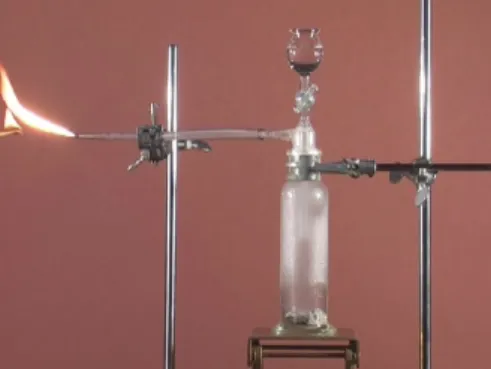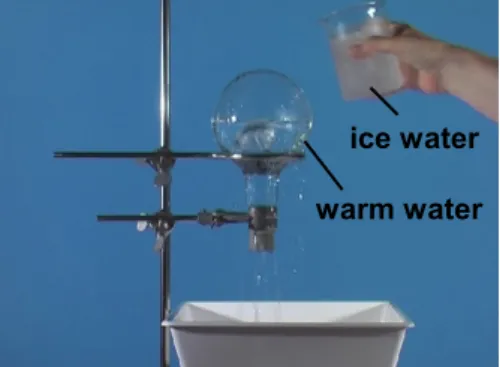CHEMICAL POTENTIAL – A QUANTITY IN SEARCH OF RECOGNITION
Chemical Potential From the Beginning
R.Rüffler, G.JobJob-Foundation, University of Hamburg, Institute of Physical Chemistry, Grindelallee 117, 20146 Hamburg, Germany
e-mail: regina.rueffler@job-stiftung.de
Keywords: Chemical potential, Temperature dependence, Pressure dependence, Concentration dependence
The calculation of chemical reactions can begin in medias res with a definition of the chemical potential μ. The simplest way to introduce this quantity, without frightening mathematical apparatus, is by using a direct measuring procedure, as is usual for various basic quantities such as length, time and mass. This method is elementary, does not require any special previous knowledge like that of entropy and energy, and immediately leads to results that can be utilized practically. For example, it is possible to predict by means of the chemical potential whether a considered reaction is possible or not (figure 1), what yield can be expected, what can be done to improve this yield, and so on.
Demonstration experiments help to illustrate the concept and deepen comprehension.
Selected demonstrations will be shown during the talk, some "live“ and most in short video films.
Figure 1. Demonstration experiment “Carbide lamp”: Calcium carbide reacts with water under formation of the combustible gas ethyne. The reaction can take place spontaneously because a potential gradient exists from the side of the reactants to that of the products.
The chemical potential, however, can be considered to be constant only in a zero approximation. A more detailed approach, which allows an extended application of this central quantity, has to discuss its dependence on temperature, pressure and concentration. In a first stage the use of only linear functions is often sufficient. The temperature coefficients are always negative; the pressure coefficients, however, are positive; and the absolute highest values in both cases are for gaseous substances. Logarithmic equations are used in the next stage to describe the mass action of a solute or gaseous substance.
A simple but illustrative example is the evaporation of water. This process will not take place spontaneously under room conditions (298 K, 101 kPa) because liquid water has a smaller chemical potential than water vapour. But an increase in temperature as well as a decrease in pressure is able to invert this relationship, and the water begins to boil at sufficiently high temperatures or low pressures (figure 2). Alternatively, a strong dilution of the water vapour in air can also lower the value of its chemical potential below that of liquid
water. This phenomenon is well-known in everday life: the volatilisation of water at room temperature allows, for example, the drying of washed clothes in the garden.
Figure 2. Demonstration experiment “Boiling by cooling”: At sufficiently low pressure caused by the condensation of water vapour in the flask, the value of the chemical potential of gaseous water will fall below that of the liquid so that the water boils at temperatures significantly less than 100°C.
The temperature, pressure and concentration dependence of the chemical potential finally is the “gateway” to the construction of phase diagrams, the deduction of the mass action law and the calculation of equilibrium constants, solubilities, and many other data.
To summarise: The chemical potential has a key position in dealing with chemical problems. Starting from this central quantity, it is possible to explore many other fields up to quantum statistics [1].
[1] Job G., Rüffler R., Physical chemistry – an introduction with new concept and numerous experiments (in German), Wiesbaden: Verlag B.G. Teubner, 2007 (in preparation)
ice water warm water

